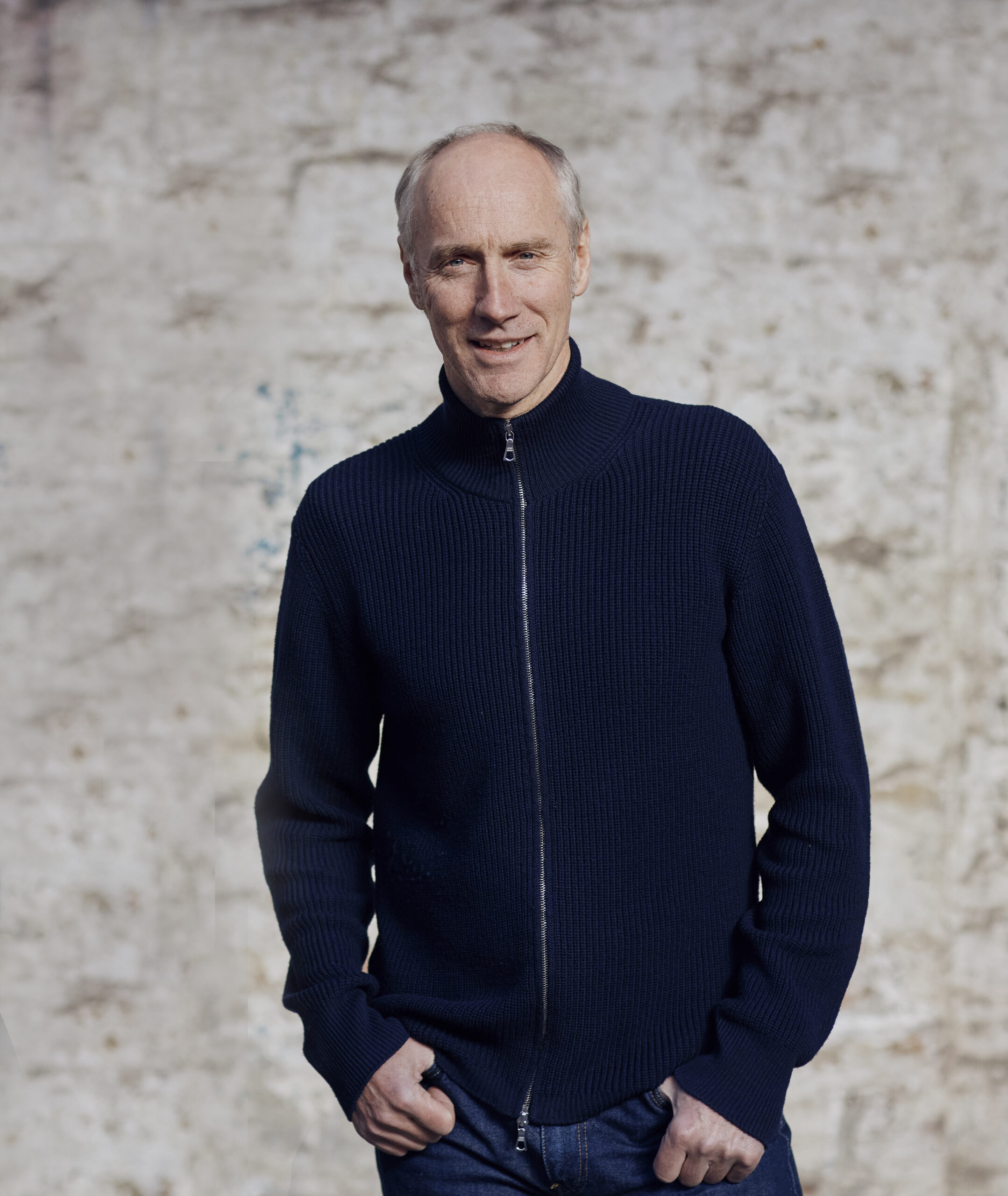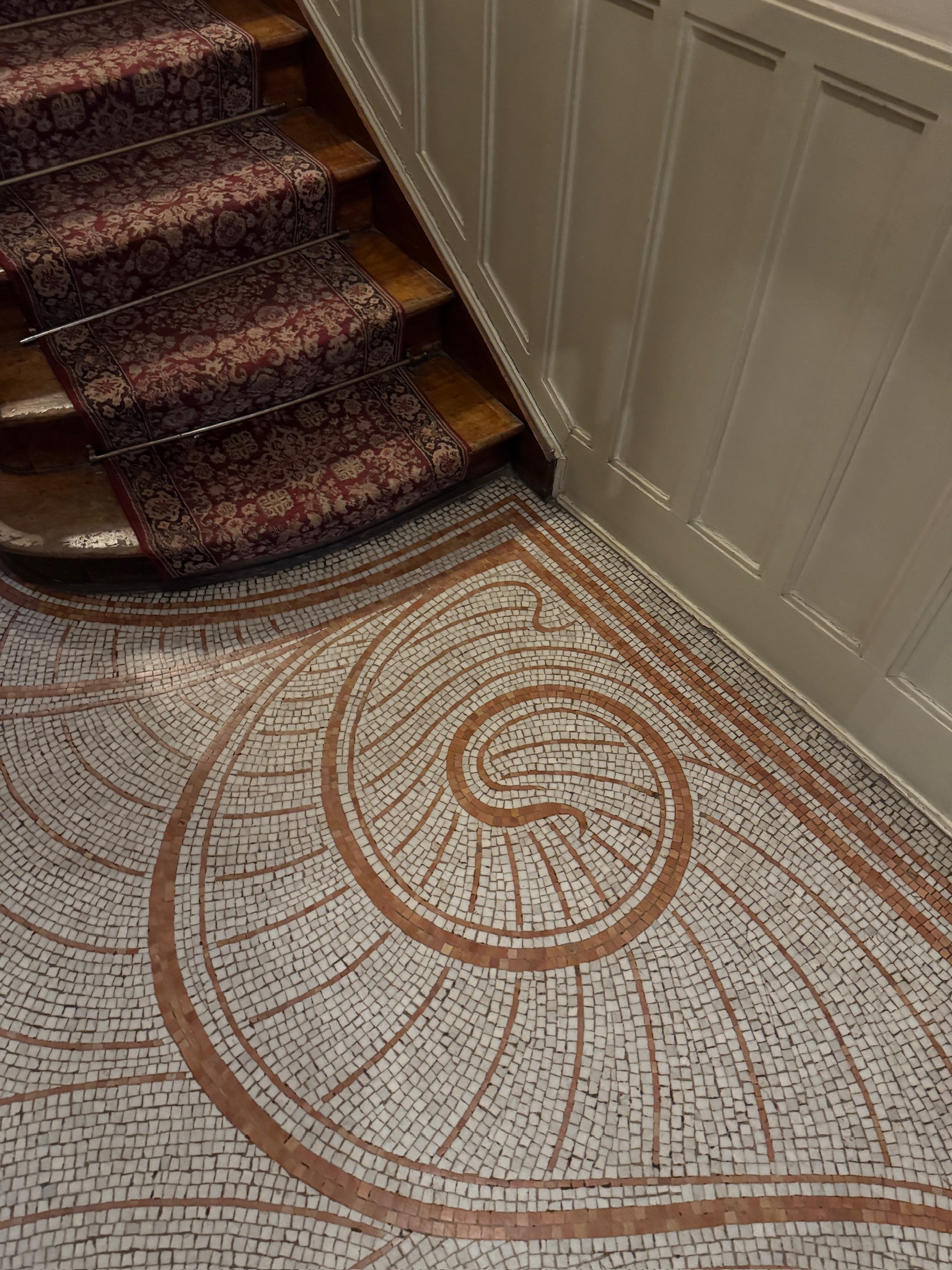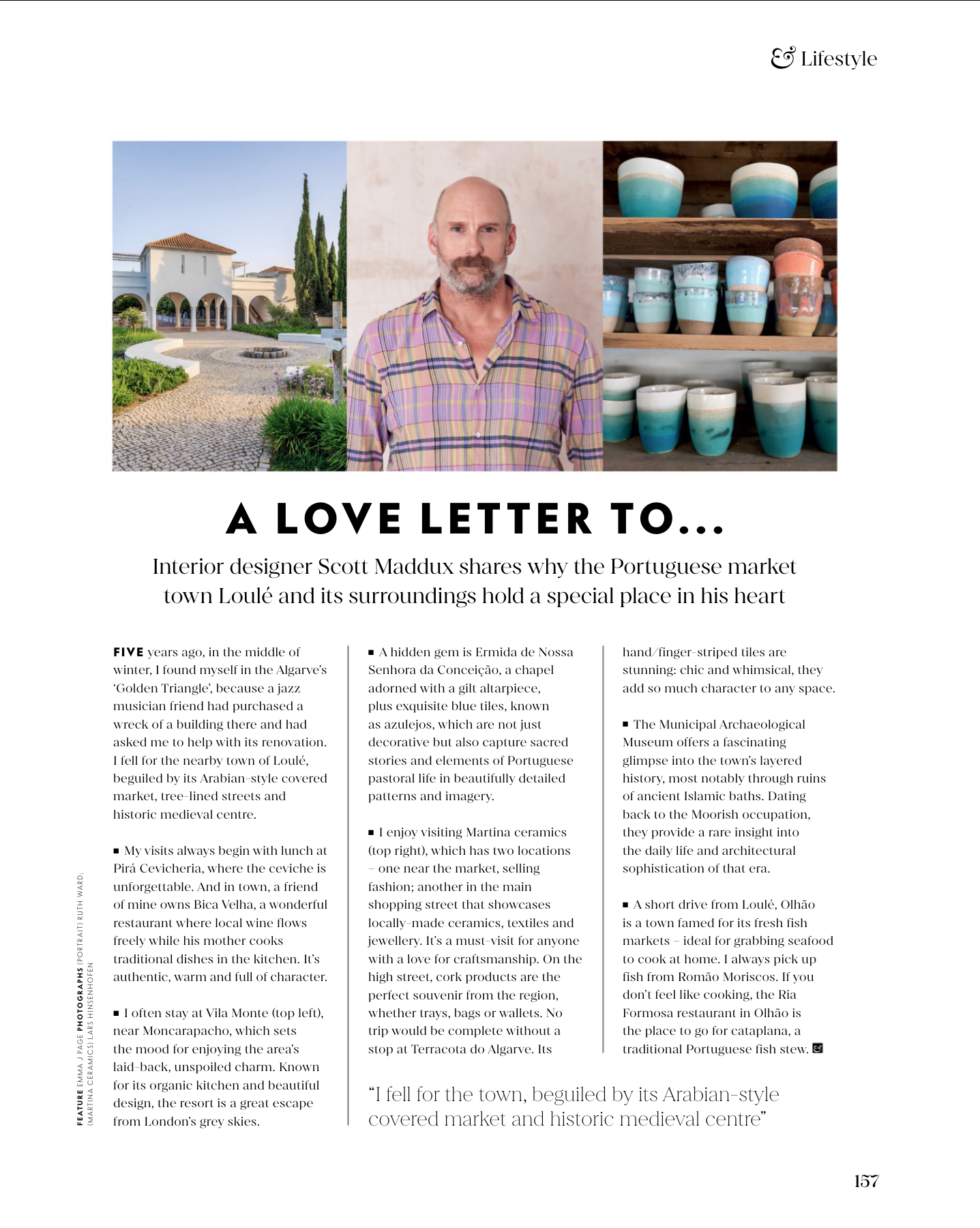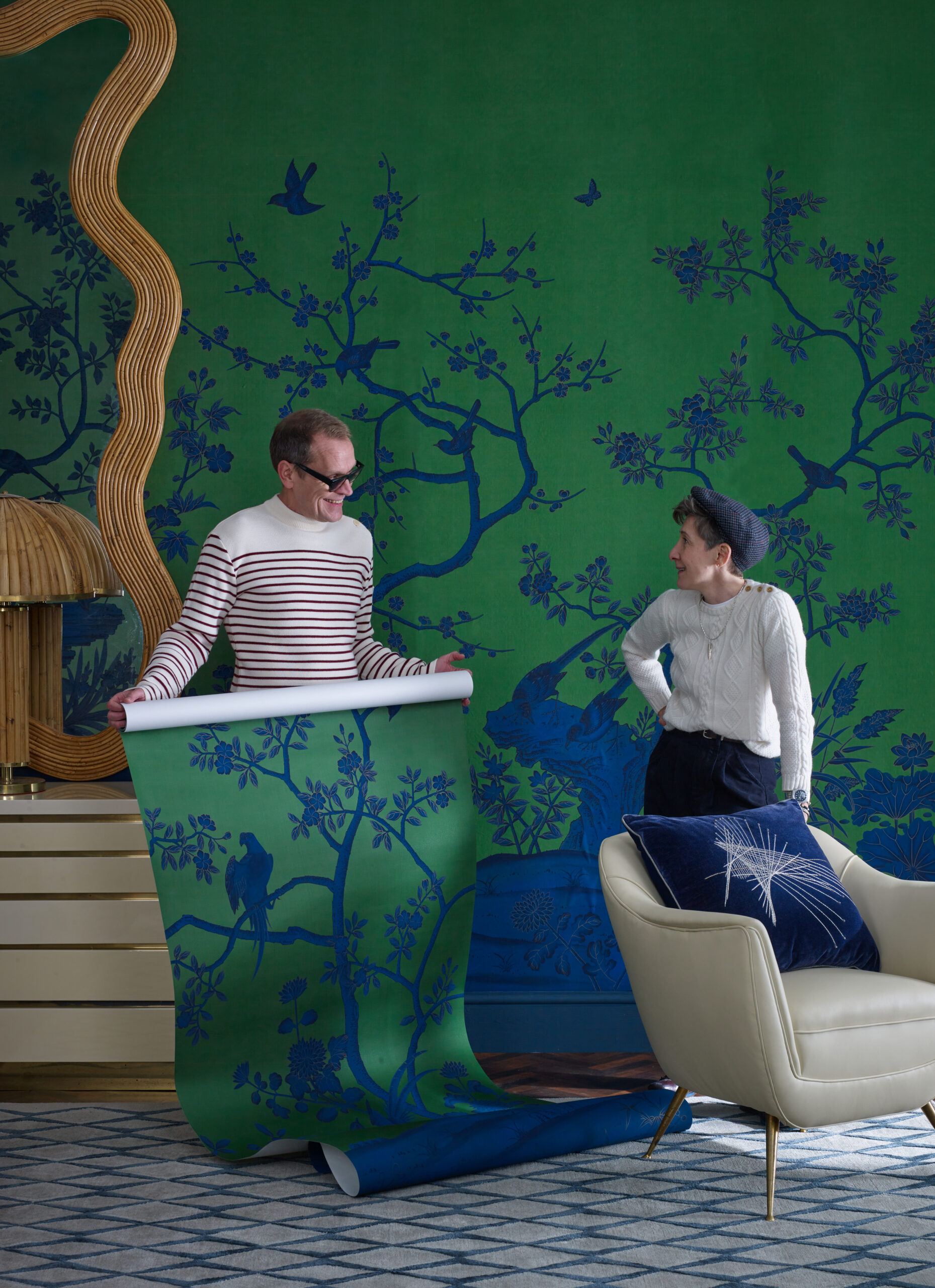Creative Confessions: Five Minutes with Tom Faulkner
Tom Faulkner is renowned for his elegant, contemporary and sculptural designs. We sat down with him to explore how he pushes the boundaries of materiality, stays connected to his craft, and draws inspiration from the skilled craftspeople who have influenced his journey.
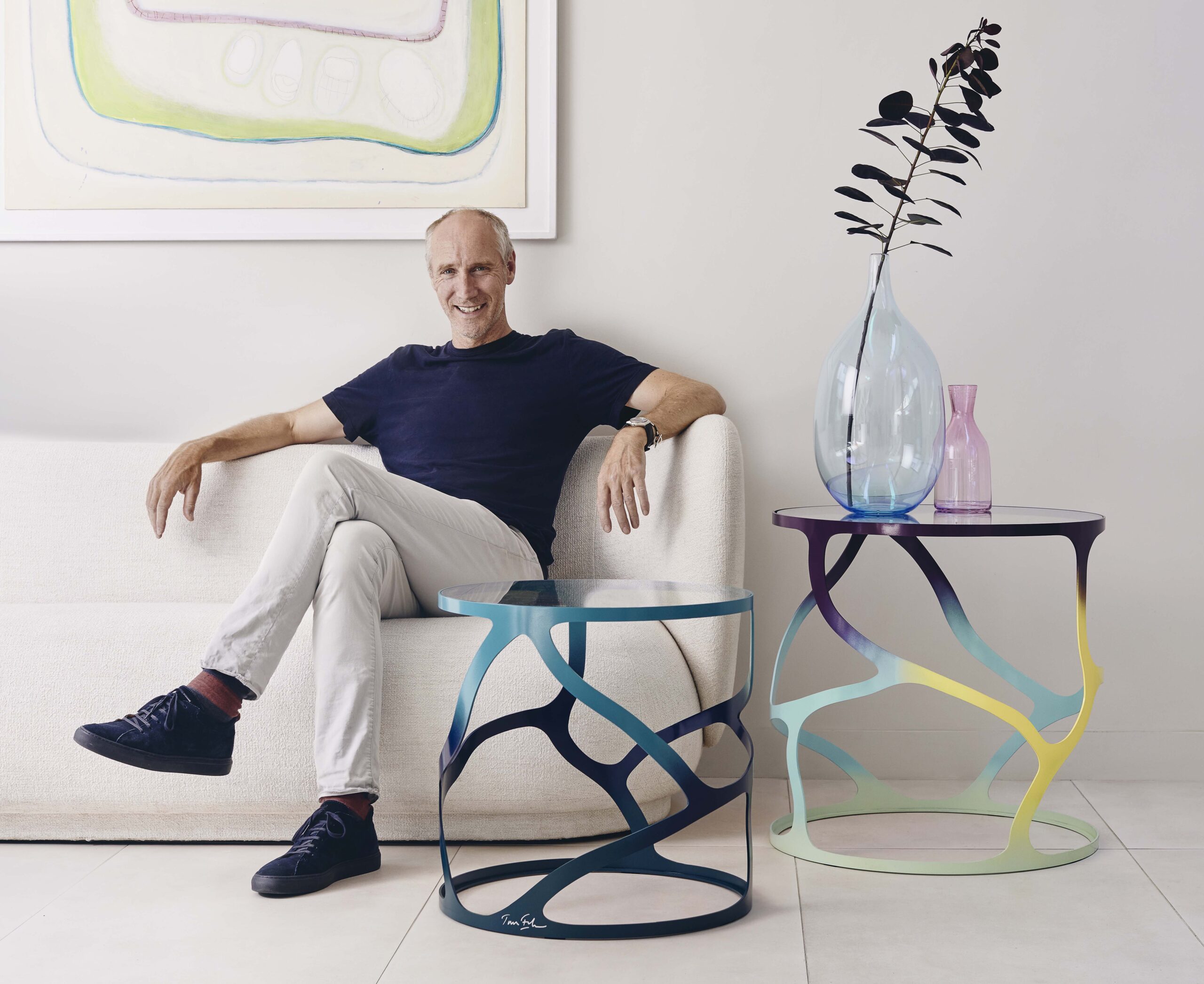
YOUR WORK OFTEN PLAYS WITH THE TENSION BETWEEN STRUCTURE AND FLUIDITY—SOLIDITY AND AIRINESS. IN COLLECTIONS LIKE PAPILLON, METAL IS TRANSFORMED INTO SOMETHING ALMOST WEIGHTLESS, WHILE PIECES LIKE CAPRICORN EMBRACE BOLD, ARCHITECTURAL GROUNDING. HOW DO YOU NAVIGATE THIS BALANCE IN YOUR DESIGNS, AND IS THERE A MOMENT WHEN YOU INSTINCTIVELY KNOW A PIECE HAS ACHIEVED ITS PERFECT EQUILIBRIUM?
Balance – like proportion - is at the heart of my design process, and it often begins with understanding the materials I’m working with. Metal has an inherent strength that allows it to take on delicate, almost ephemeral forms without losing its integrity.
Achieving equilibrium is an intuitive process, and it’s always difficult to know when something is complete. There’s a moment when everything - line, weight, proportion, all align harmoniously, and that’s when I know something is finished.
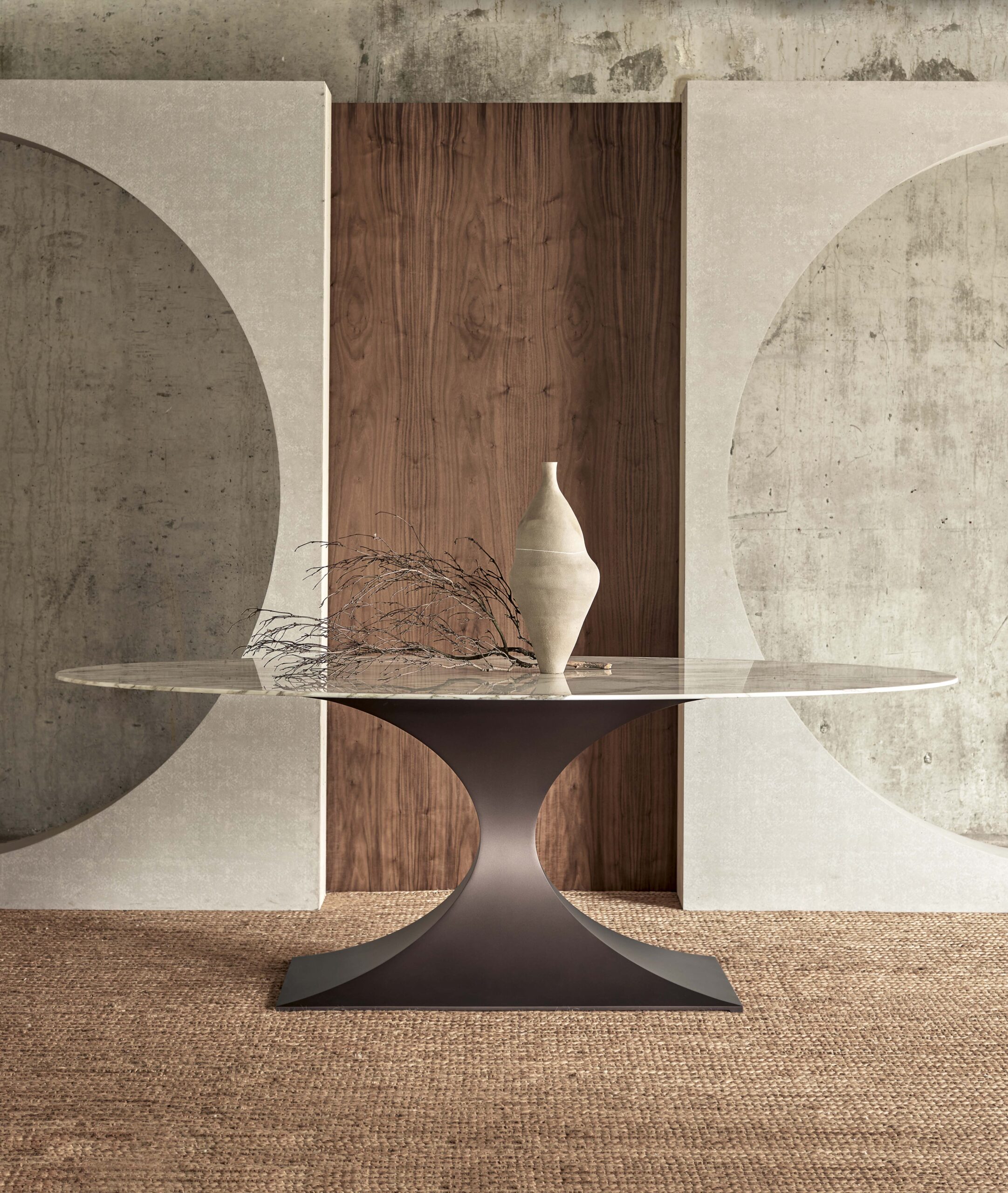
CRAFTSMANSHIP AND MATERIAL INTEGRITY ARE AT THE CORE OF YOUR WORK. HOW DO YOU SELECT MATERIALS, AND WHAT ROLE DO THEY PLAY IN SHAPING YOUR DESIGNS?
Materials dictate the language of my designs. I choose them not just for their aesthetic qualities but for how they respond to shaping, finishing, and light. Whether it’s steel, bronze, or glass, each material has a distinct character that influences the final form.
Our Skye collection last year was specifically made out of stainless steel – and I really used it for its inherent qualities, drawing on the doctrine of “Truth to Materials”, there is no paint, and no ornament – just pure steel, used in the best way to give the shapes their forms.
I’m not a fan of imitation metals, like liquid metal, and I like to push the limits of what a material can do, but I never force it into something unnatural. Instead, I let the material guide the process, revealing its strengths through simplicity and precision.
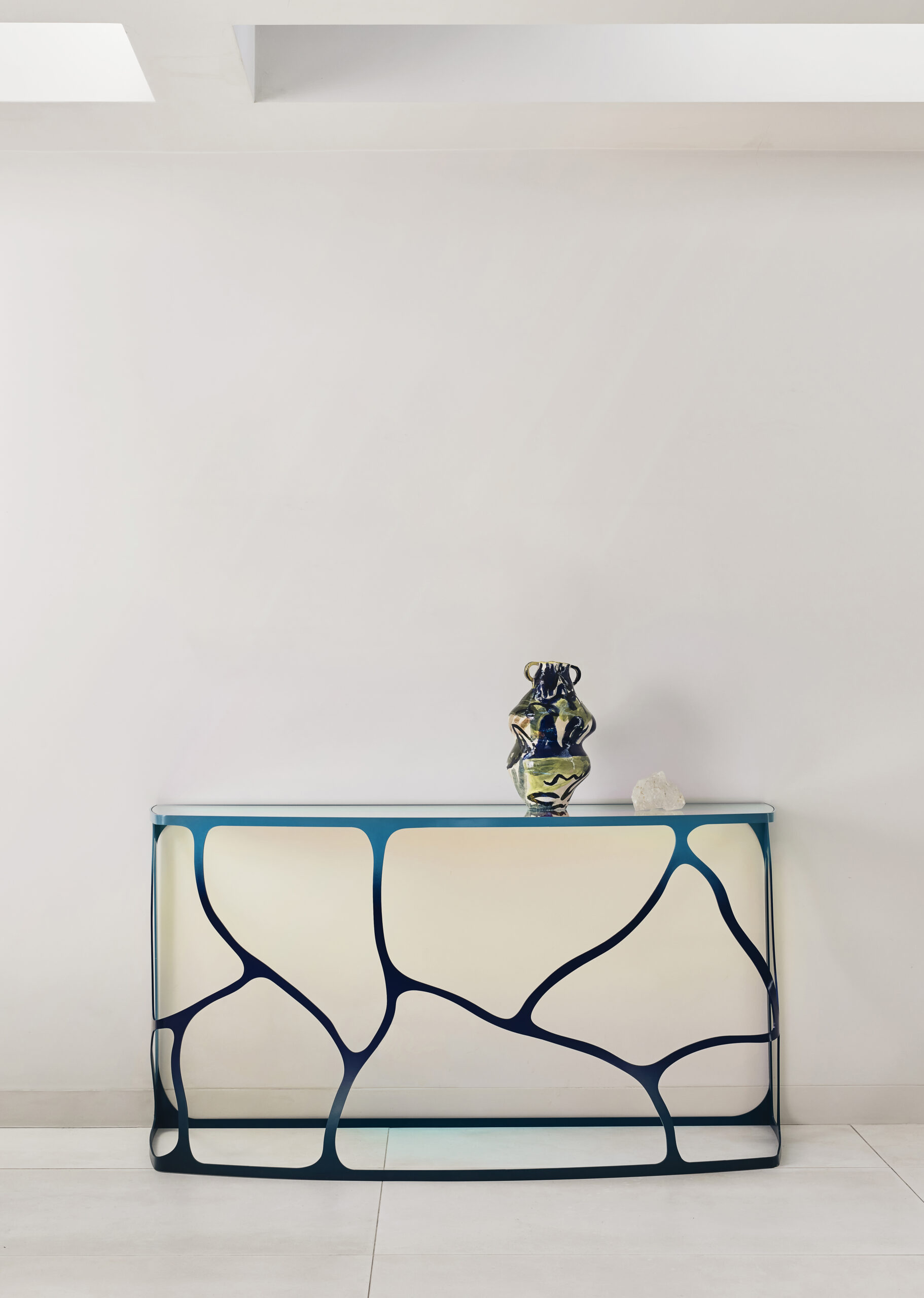
MANY OF YOUR COLLECTIONS DRAW FROM ARCHITECTURE AND NATURE. CAN YOU SHARE A SPECIFIC MOMENT OR PLACE THAT HAS HAD A LASTING INFLUENCE ON YOUR WORK?
Architecture is hugely influential, from Le Corbusier to Gaudi, and travel has always been a wellspring of inspiration for me. One particularly defining moment was a trip to Joshua Tree national park in California in 2017 when I was inspired to by the formations of the rocks and boulders in the park to make the Papillon collection. And the five colourways I chose for the collection are all inspired by British butterflies…
All of nature’s forms, from the sweeping curves of a riverbend to the jagged silhouette of a mountain, have a way of informing my aesthetic and probably find their way into my work.
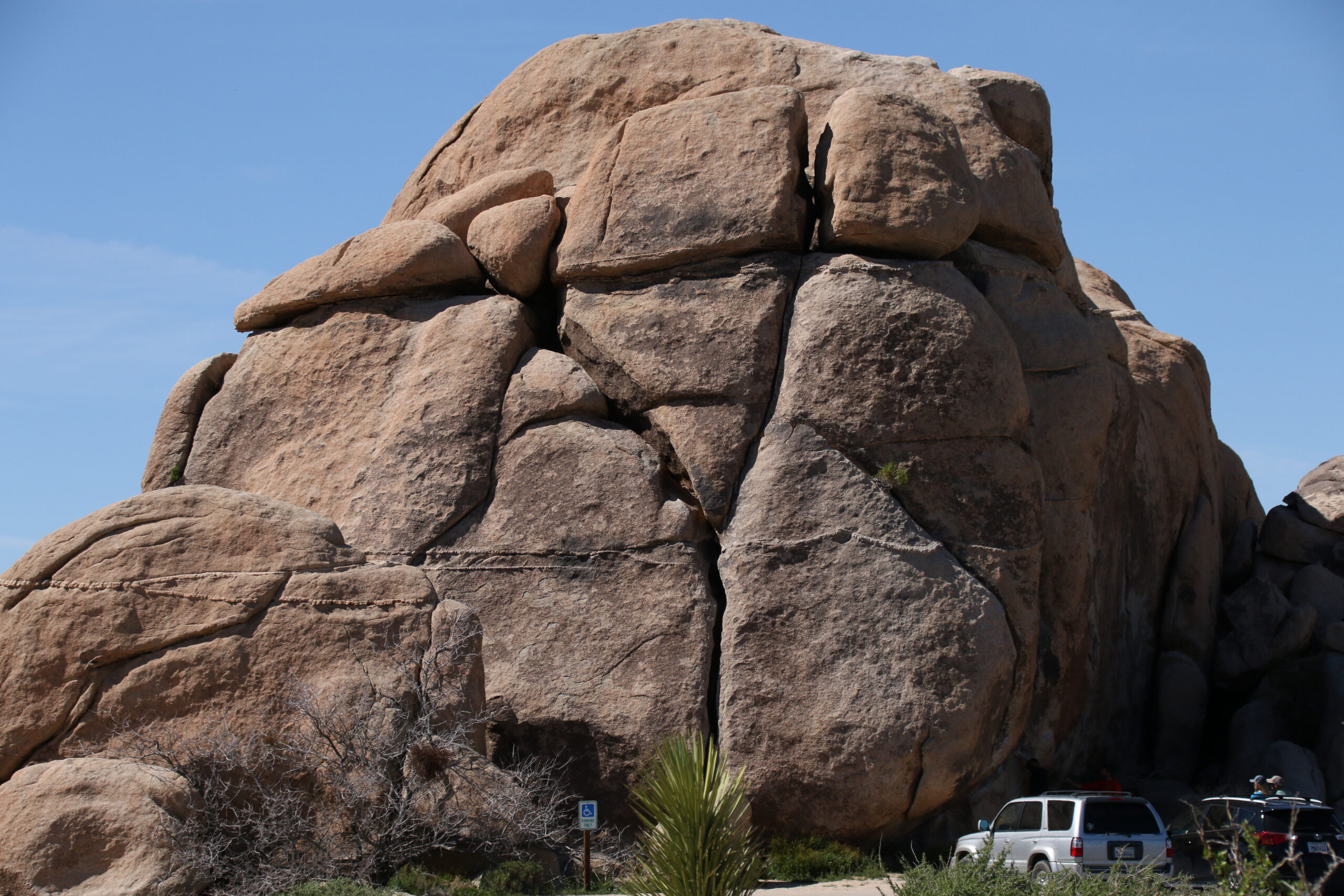
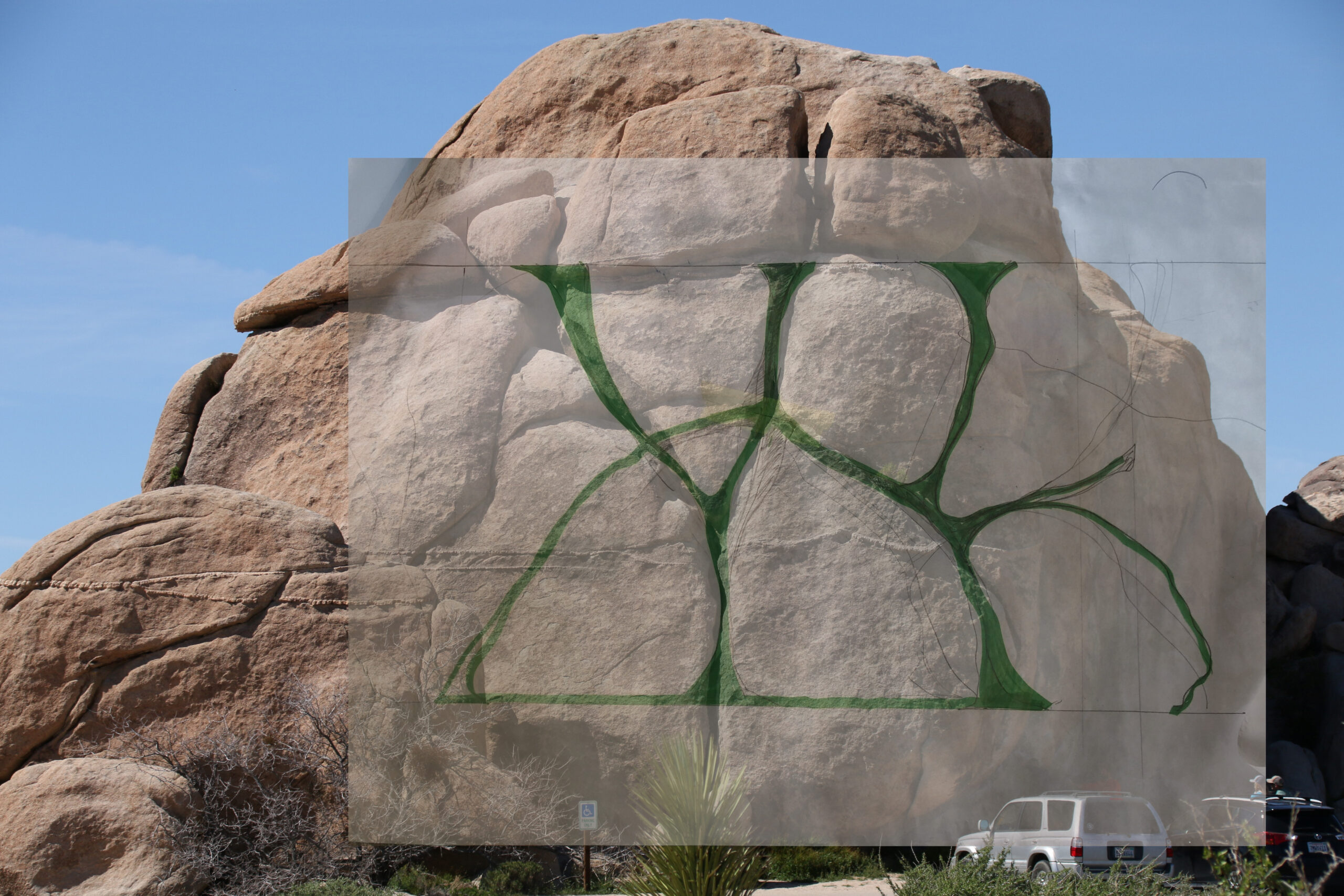
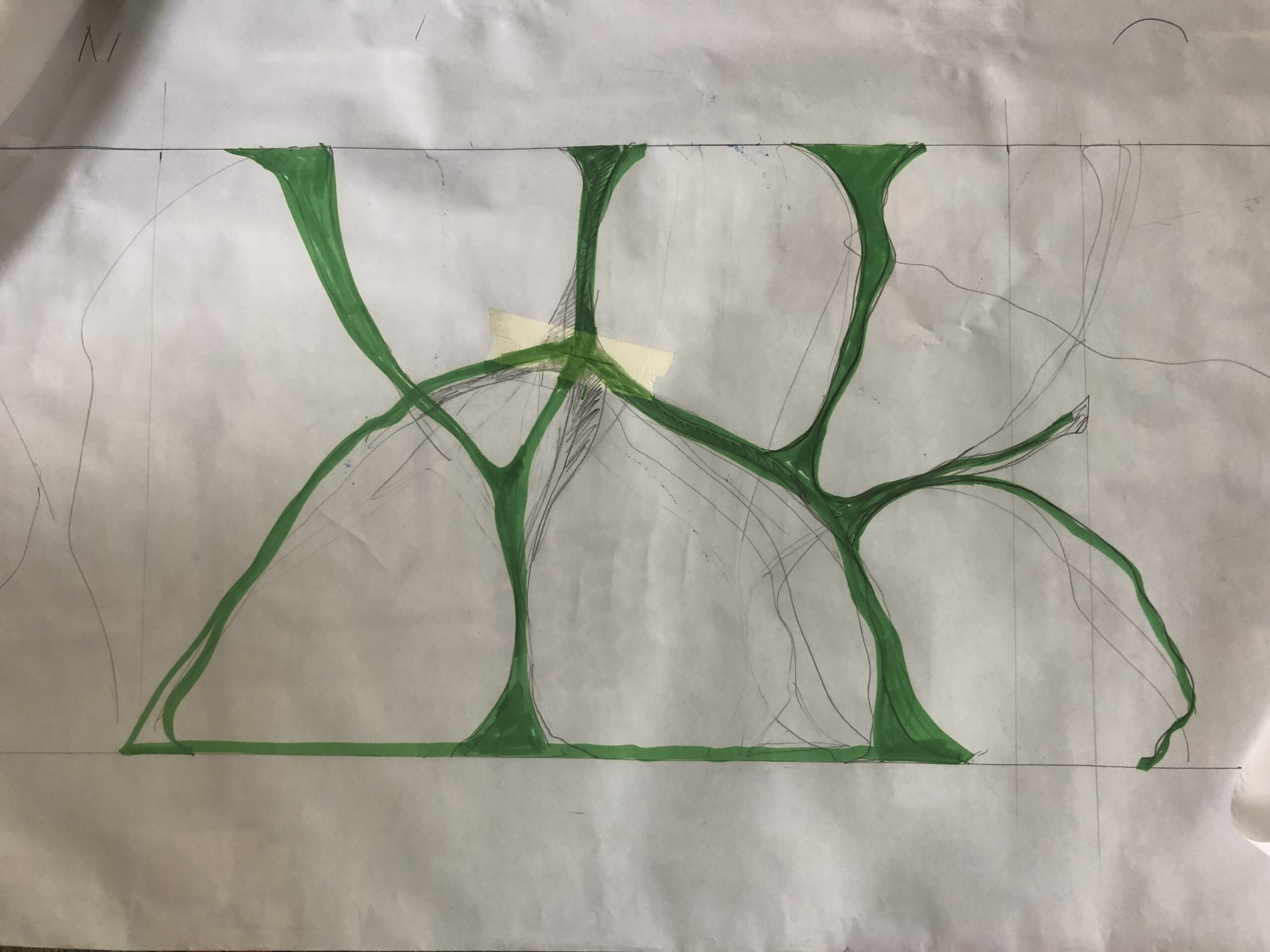
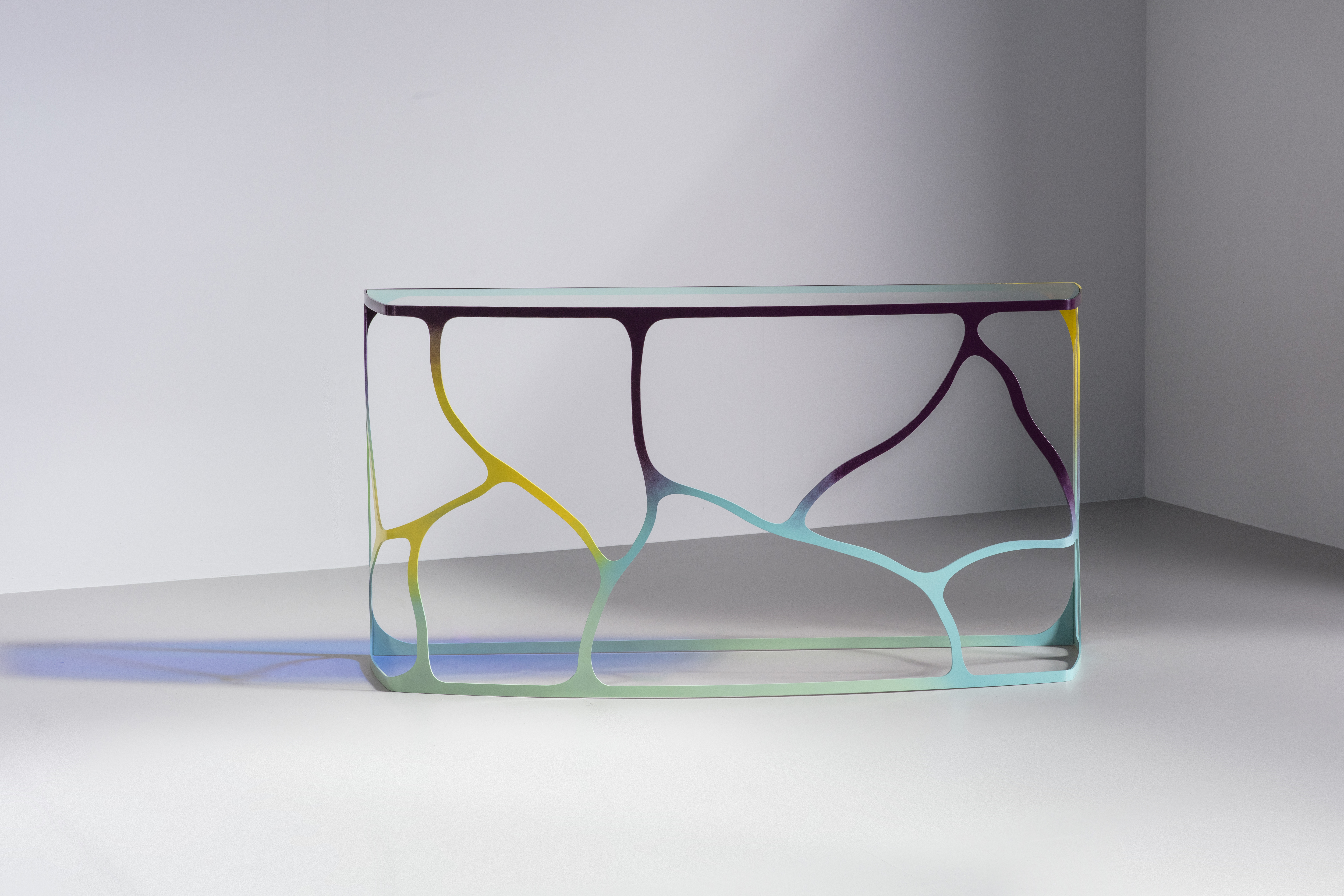
YOUR PIECES HAVE A PURITY OF FORM—PARED BACK BUT NEVER MINIMAL FOR THE SAKE OF IT. HOW DO YOU DECIDE WHEN A DESIGN HAS REACHED ITS ESSENCE, FREE OF EXCESS YET STILL RICH WITH PERSONALITY?
I am influenced by the modernists of the 20th Century, who often relied on line and proportion rather than ornament.
Stripping back is part of the process, but detail is incredibly important (just ask Mies van der Rohe) but every line, every curve must have a reason to be there. I refine a piece until it feels distilled yet expressive, the challenge is to avoid overworking something - to recognise when it has reached a point where nothing more needs to be added or taken away. And the more simple the piece somehow the more difficult this can be!
YOUR PIECES FEEL TIMELESS YET HIGHLY CONTEMPORARY. HOW DO YOU BALANCE INNOVATION WITH ENDURING DESIGN PRINCIPLES?
Thank you! Maybe a sense of timelessness comes from the focus on line and proportion - elements that can transcend trends. Capricorn, for example, our best-selling collection, is contemporary in feel but has very classical lines…
At the same time, I believe design should feel alive and relevant to its time, which is where innovation comes in. Whether it’s experimenting with new finishes or reimagining traditional techniques, I try to push boundaries without losing sight of fundamental principles. Hopefully, a well-designed object will always feel just as compelling decades from now as it does today.
Process is always important – I was originally inspired by the possibilities offered by laser cutting, I have been inspired to design new pieces by blacksmithing techniques, and now it’s 3D printing which is interesting somehow…
COLLABORATION IS AN IMPORTANT PART OF DESIGN. ARE THERE PARTICULAR ARTISANS OR CRAFTSPEOPLE YOU HAVE WORKED WITH WHO HAVE INFLUENCED YOUR PROCESS?
Absolutely. Working with skilled artisans is one of the most rewarding aspects of my practice. I’ve had the privilege of collaborating with metalworkers, and glassblowers, but one of my favourites was working with Eric Charles-Donatien, a Parisien plumassier (featherworker) where we designed a table and a chair using his feathers and my chairs. He works in haute-couture in Paris and has made dresses for virtually everyone on the red carpet, and he came to work on these chairs with us in Swindon for three days (staying at the Premier Inn) and had a wonderful time with the guys in the workshop.
We also worked with Fromental last year to create a wall-covering. A process that I really enjoyed because I love two-dimensional / graphic design. We used my Capricorn shape which I arranged in position and Tim (Butcher, founder of Fromental) chose the colours and the fabric and the detail, and they put it all together. And it was a big success.
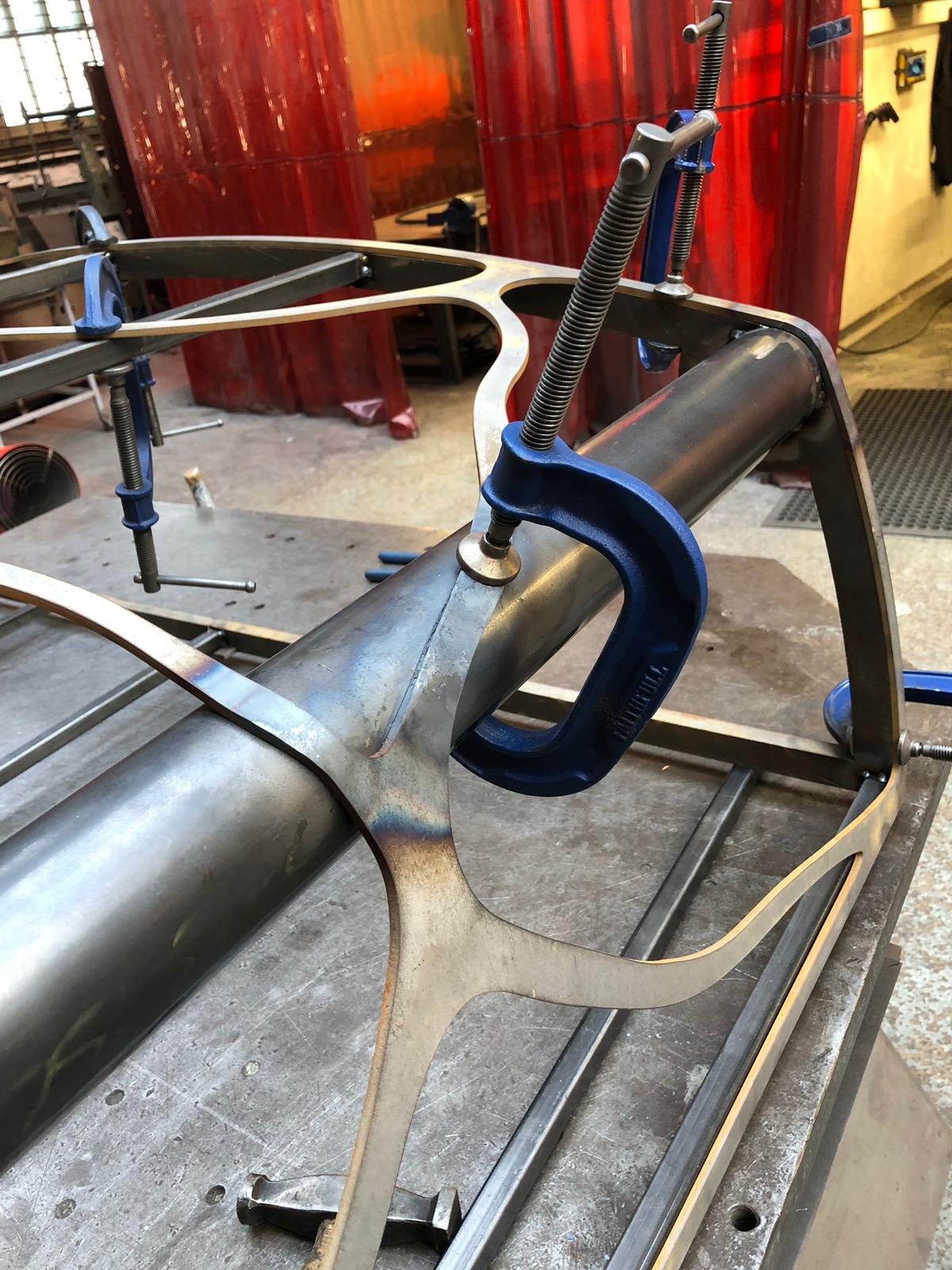
WHAT HAS BEEN ONE OF THE MOST PIVOTAL MOMENTS IN YOUR CAREER SO FAR?
From a business perspective, possibly the first was opening a showroom in Chelsea in 2008, and the second opening in New York in 2023, but otherwise there have been many – most of them unplanned.
From a design point of view, apart from discovering metalwork in 1996 (I am not a trained metalworker) the launching of Papillon somehow gave me a lot of confidence and made me realise how important it is to be bold and to have belief in what you are doing.
IF YOU WEREN’T A FURNITURE DESIGNER, WHAT OTHER CREATIVE DISCIPLINE DO YOU THINK YOU WOULD HAVE PURSUED?
I would have liked to be a graphic designer or a musician.
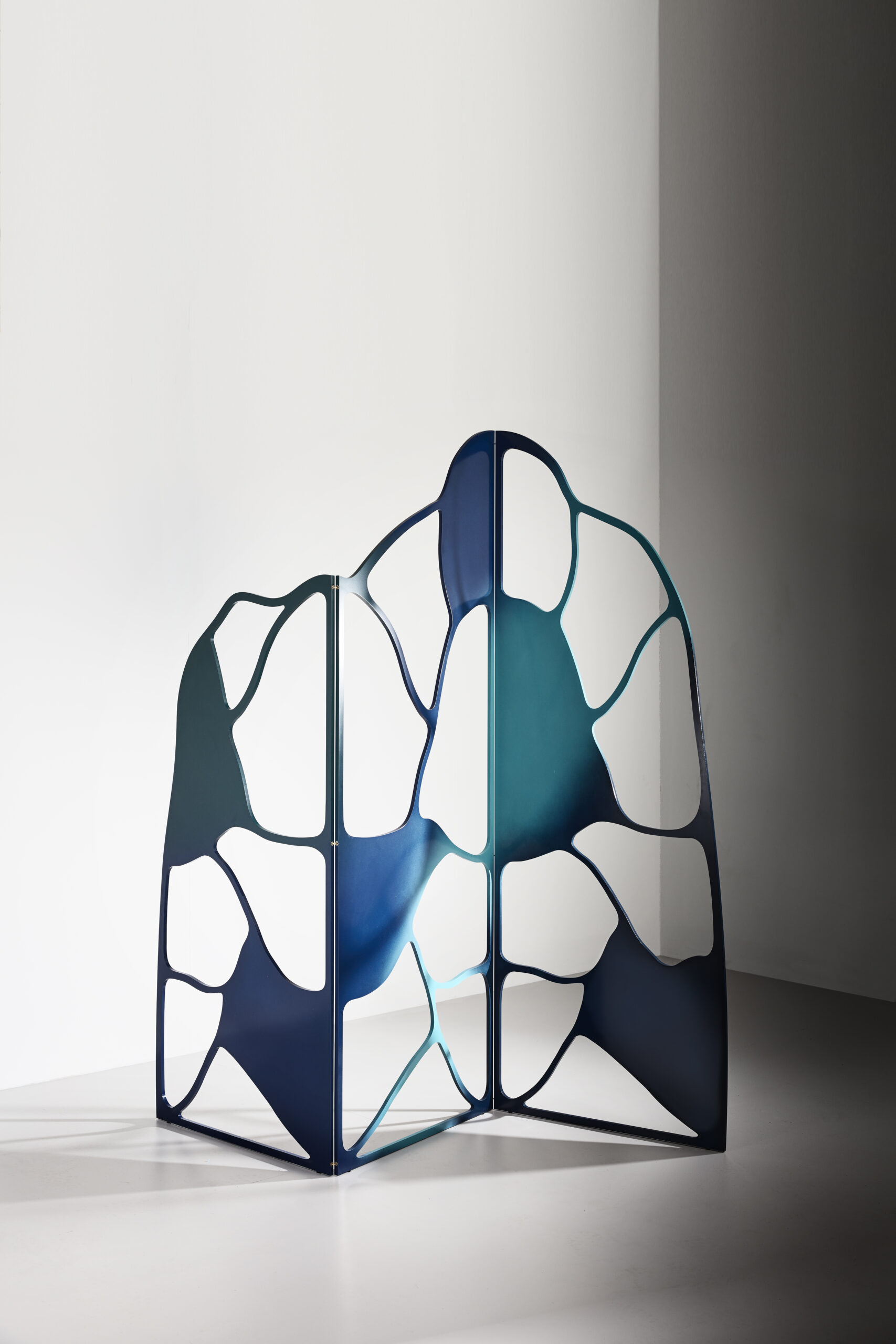
ARE THERE PARTICULAR ARTISTS, DESIGNERS, OR MOVEMENTS THAT HAVE SIGNIFICANTLY INFLUENCED YOUR APPROACH TO DESIGN?
Isambard Kingdom Brunel is a particular hero. Our workshop in Swindon was built by him and I frequently catch the train there from Paddington which is an awe inspiring railway station, whatever day of the week it is. It his combination of engineering integrity and and attention to beauty which is so inspiring.
I’ve always been drawn to the work of the Twentieth Century Modernists, both architects and furniture designers, like Marcel Breuer, Mies van der Rohe, Le Corbusier, Charlotte Perriand, Eileen Grey, Gio Ponti and the like. It is their attention to line and form which attracts me.
I love Art Nouveau and the Secessionists, and there are some sculptors who have been a big influence on me, particularly Richard Serra and Barbara Hepworth. Beyond design, my favourite artists beyond the classics tend to be American abstract expressionists.
All of these influence my work, converging and informing the way I approach shape, structure, and balance.
IN AN INCREASINGLY DIGITAL WORLD, HOW DO YOU MAINTAIN A CONNECTION TO THE TACTILE EXPERIENCE OF MAKING?
No matter how advanced digital tools become, I believe nothing can replace the physicality of making. I spend a lot of time in the workshop with makers, experimenting with materials, testing proportions, and refining details by hand. There’s a certain knowledge that only comes from direct interaction with materials, the way metal bends under heat, the texture of a surface after finishing. The “human factor” is incredibly important in the making process. A maker normally has to use their judgement to know when a piece is actually finished, often by feeling it, with their hands. Keeping that (literal) hands-on approach is essential to ensuring my designs retain their authenticity and soul.
